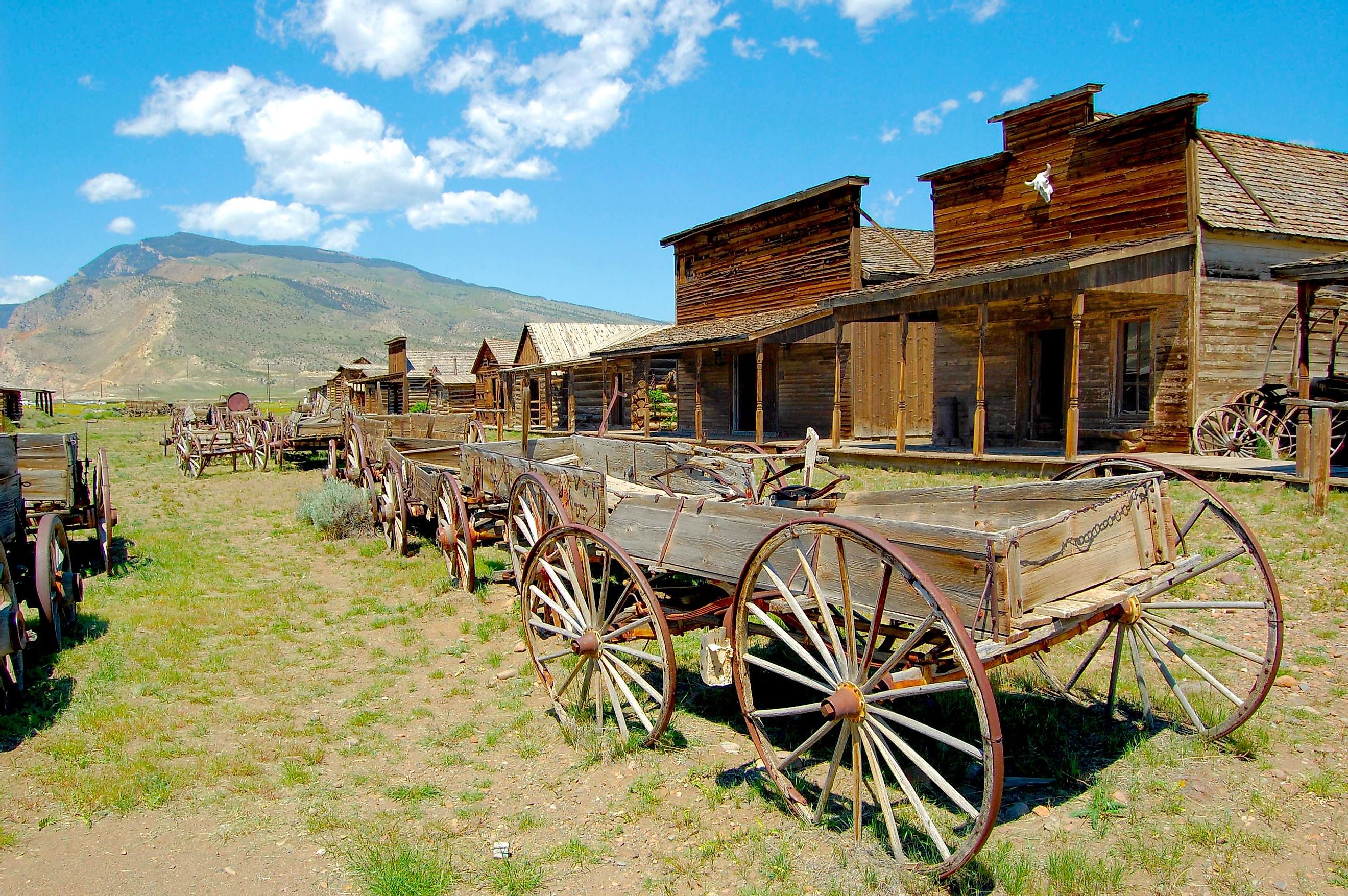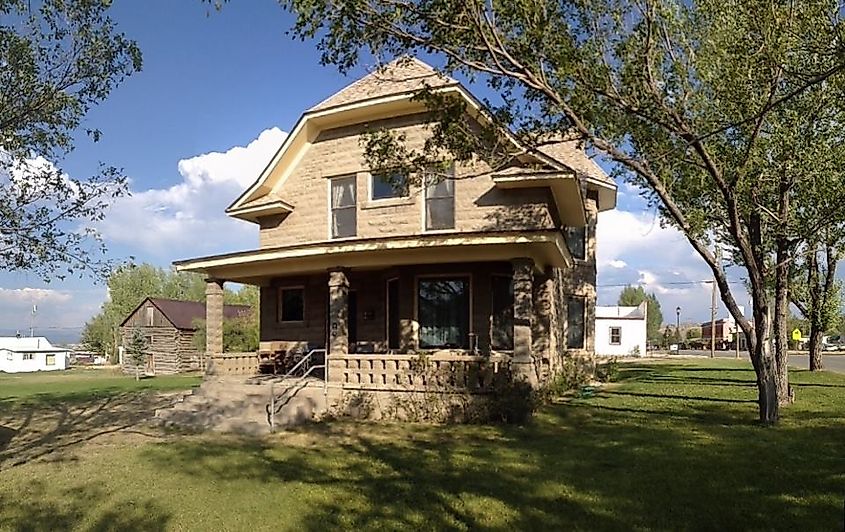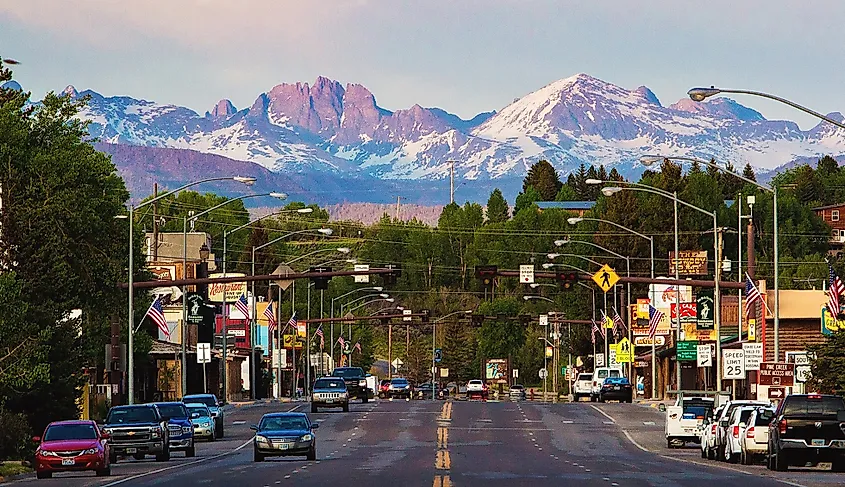
6 Must-See Historic Towns In Wyoming
Wyoming, the tenth largest state by size but the smallest by population, is known for its history of cattle ranching (“The Cowboy State”) and for being the first state to give women the vote (“The Equality State”). Amid its wide open spaces and breathtaking landscapes, Wyoming is home to numerous historic small towns that are well worth visiting. To help get your travel plans started, check out our list of six historic Wyoming towns.
Cody

Named for the famous Old West hunter and showman “Buffalo Bill” Cody, the town of Cody is home to the Buffalo Bill Center for the West. The center houses five museums covering various aspects of the history, culture, and arts of the American West. The Plains Indian Museum is a particular highlight, showcasing America’s finest collection of Plains Indian tools, artwork, and other artifacts. Cody, which is set along the Shoshone River at the western edge of the Bighorn Basin, also provides access to the East Gate of Yellowstone National Park.
Encampment

The Carbon County village of Encampment started out as one of the many mining camps that sprouted up during Wyoming’s copper mining boom around the turn of the twentieth century. While many of those mining camps have vanished, the Grand Encampment Museum preserves this key aspect of Wyoming history with a range of exhibits and more than a dozen recreated structures. Wyoming also has a long history as one of the premier big game hunting spots in North America, and Carbon County may be the best place in the state for hunting game like elk, moose, and antelope.
Hulett

Hulett is the closest community to a natural wonder of historic proportions: Devils Tower, also called Bear Lodge Butte. Devils Tower is a flat-topped rock formation that juts into the sky more than 850 feet, and it inspired the establishment of the first national monument (Devils Tower National Monument) by President Theodore Roosevelt in 1906. If you are interested in geology, historic preservation, or awe-inspiring vistas, Devils Tower is a must-see. Experienced climbers can register at the park office and scale the tower, a vantage point that offers an indescribable overlook of the surrounding landscape.
Pinedale

The Old West explorers, traders, guides, trappers, and hunters known as “mountain men” have achieved mythical status in Wyoming, and this history and mythology is commemorated at the Museum of the Mountain Man. Pinedale is an appropriate home for this museum since the surrounding Wind River Mountains region of southwestern Wyoming is rated as one of the best hunting and fishing areas in the state. Fremont Lake, just a few miles outside of town, is a premier spot for trout fishing. Another nearby destination, Squaretop Mountain, offers a mesmerizing panorama of the Bridger-Teton National Forest.
Powell

The town of Powell became attached to a shameful part of American history when, during World War II, the Japanese-American relocation and confinement camp known as Heart Mountain operated just outside of town. Since 2011, the Heart Mountain Interpretive Center has brought this history to light via camp artifacts, interactive exhibits, oral histories, and restored barracks. The Honor Roll, listing nearly 650 young men who served in the U.S. armed forces during the war despite being unjustly confined in the camp, is one of many sobering artifacts at Heart Mountain.
Rock Springs

Rock Springs, with nearly 24,000 residents, is the fifth largest town or city in Wyoming. Rock Springs is also home to a grand piece of historic architecture, the imposing 1894 City Hall building constructed of native sandstone. The structure is great to admire both outside and inside, as it now houses the Rock Springs Historical Museum. The museum highlights how the mining and railroading booms of the late 1800s brought workers to Rock Springs from all over the world, a diversity that sometimes fueled outrages like the 1885 Rock Springs Massacre of Chinese laborers.
Most visitors come to Wyoming to experience the natural beauty of its seemingly endless natural landscape, and rightly so. But there is a beauty to Wyoming’s small towns as well, and a great deal of history—both commendable and regrettable—to be learned by visiting them. So, come to Wyoming for its great outdoors, but also carve out some time to explore a few of the state’s historic towns during your next visit.











